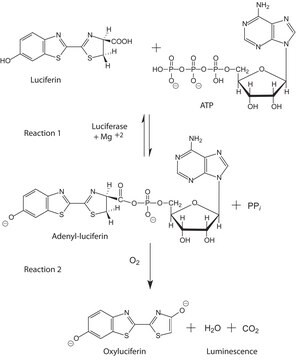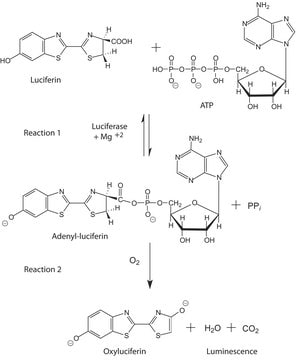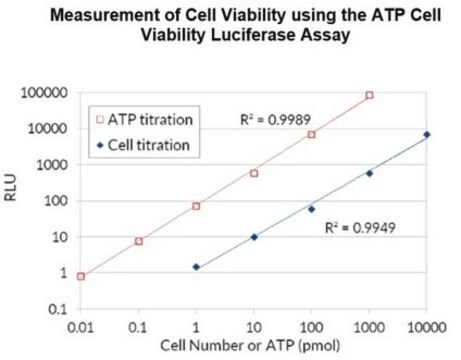119107
ATP Assay Kit
Synonym(s):
Luciferin-Related Kit
About This Item
Recommended Products
usage
sufficient for 200 tests
Quality Level
manufacturer/tradename
Calbiochem®
storage condition
OK to freeze
avoid repeated freeze/thaw cycles
input
sample type soil
sample type blood
sample type urine
sample type milk
sample type sludge
detection method
chemiluminescent
storage temp.
−70°C
General description
Components
Warning
Specifications
Principle
Preparation Note
Storage and Stability
Legal Information
Signal Word
Danger
Hazard Statements
Precautionary Statements
Hazard Classifications
Acute Tox. 4 Oral - Aquatic Acute 1 - Aquatic Chronic 2 - Eye Dam. 1 - Skin Irrit. 2 - STOT RE 2 Oral
Target Organs
Kidney
Storage Class Code
10 - Combustible liquids
Certificates of Analysis (COA)
Search for Certificates of Analysis (COA) by entering the products Lot/Batch Number. Lot and Batch Numbers can be found on a product’s label following the words ‘Lot’ or ‘Batch’.
Already Own This Product?
Find documentation for the products that you have recently purchased in the Document Library.
Customers Also Viewed
Our team of scientists has experience in all areas of research including Life Science, Material Science, Chemical Synthesis, Chromatography, Analytical and many others.
Contact Technical Service








